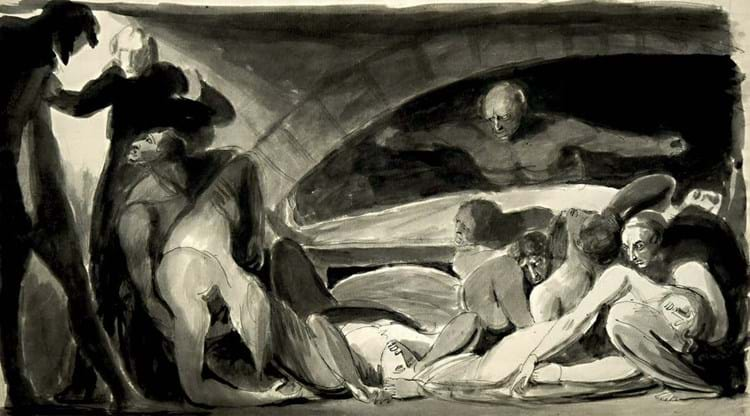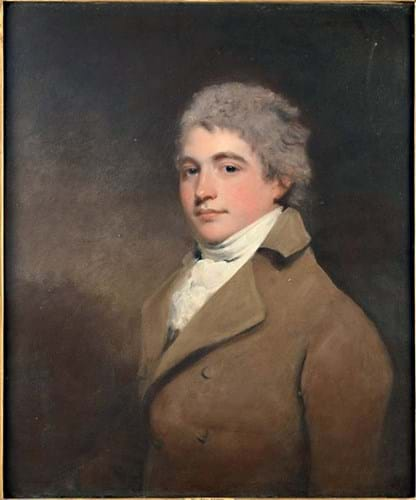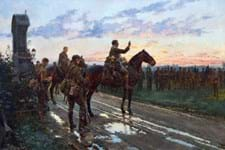It was on a visit to a “foul and fetid” Bedfordshire jail in 1773 that philanthropist John Howard (1726- 90) first became interested in prison reform.
He went on to dedicate the rest of his life to improving conditions for inmates, bringing attention to the dangerous, unhealthy environments in jails across Britain and mainland Europe. It is said he travelled nearly 80,000km on horseback and spent some £30,000 of his own money in his quest for prison reform.
Howard’s inspections, as well as his own experience of captivity on board a ship taken by a French privateer in 1756, formed the basis of his 1777 landmark report The State of the Prisons, which concluded that 18th-century jails were “filthy and corrupt-ridden places, not fit for human habitation”.
Among those inspired by his work was society portraitist George Romney (1734-1802) who, it is said, was privately troubled by the extreme inequalities in Georgian society and its effects on the working classes. Following Howard’s death of ‘gaol fever’ (epidemic typhus) in 1790, Romney executed a series of powerful drawings of men and women suffering in captivity. They are considered among his most modern and dramatic works today.
Social history
An example appeared at Cheffins (24.5% buyer’s premium) in Cambridge on December 6.
While most are unresolved pencil sketches that typically sell for around £1000-2000, this ink and wash was a more finished work. A handful of comparable drawings reside in public collections including The Met, New York.
It has been suggested that the crouching figure at the back of the 21 x 12in (52 x 29cm) scene bears some resemblance to Romney himself.
According to a label to the reverse it was formerly in the collection of the South African businessman and art-collector Alfred de Pass (1861- 1952) and was later sold though the London dealership Agnew’s as part of an exhibition of French and English drawings in 1966.
Prices for Romney portraits have had their ups and downs commercially since then but an image such as this that oozes social history is much more attuned to today’s collecting taste.
Estimated at £4000-6000, it sold to the UK trade at £42,000, making it one of the highest prices for a single drawing by the artist to sell at auction.
Ancestor of Cedric Morris
Another highlight at Cheffins was a portrait by fellow Georgian artist John Hoppner (1758-1810) depicting a young Sir John Morris (1775-1855), the 2nd Baronet of Clasemont.
The 2ft 6in x 2ft 1in (76 x 63cm) oil on panel was offered alongside around 50 lots of pictures and antiques from a private London collection in Launceston Place, and according to the catalogue note, the sitter was an ancestor of the 20th century painter and plantsman Cedric Morris.
He was previously identified as Sir John Morris, the 1st Baronet of Clasemont (1745-1819), a Swansea copper and coal magnate who is known for founding the industrial township of Morriston, but the sitter’s age and the portrait’s exhibition date in 1797 (when it appeared at the Royal Academy) led the auction house to conclude it was more likely to be his son.
With a well-documented provenance and an 85-year gap since its last appearance on the secondary market, it was knocked down on mid-estimate at £8500.
Elsewhere in the sale was a pair of matching portraits depicting Lord Henry Howard, later 6th Duke of Norfolk, and his first wife Lady Anne Somerset, attributed to John Michael Wright (1617-94). Acquired by the vendor’s great uncle in the 1930s, the duo sold above top estimate at £15,000.
Wright, who served as court painter before and after the English Restoration, is best known for his restrained and elegant portraits, especially in contrast with the more flamboyant style of Peter Lely. Several Howard portraits linked to Wright exist ranging in quality from prime originals to studio replicas.
The 2ft 2in x 22in (66 x 57cm) oil on canvases at Cheffins are thought to be based on versions Wright painted in c.1660 following the restoration of both the monarchy and Duke of Norfolk title (which had been in an abeyance for almost a century).
It has been suggested that the portrait of Lady Anne might have been Wright’s prototype for the half-length composition hanging at Powis Castle in Wales.
There was less enthusiasm for one of the sale’s star lots, a portrait attributed to Robert Peake (c.1551-1619) depicting a boy identified as John Curzon of Kedleston (1598-1686) and consigned from a private collection in Kensington where it had resided since 2007. Its £20,000-40,000 estimate proved a little punchy and it was knocked down at £18,000.
Favourite subject
The pick of the 20th century pictures was an Edward Seago (1910-74) painting of Salisbury Cathedral, its spire lit by the sun, which was knocked down on top estimate at £10,000. It had been acquired by the vendor’s great grandfather Gerald Robarts (1878-1961), a British Army officer and former director of Coutts & Co.
The 16 x 20in (41 x 51cm) oil on canvas had a certain freshness and spontaneity that collectors look for in Seago’s work and the price it achieved is towards the upper end for a Salisbury subject by the artist.
Views of Salisbury Cathedral were a favourite subject of Seago’s and were probably inspired by those of John Constable. Constable’s first recorded drawing of the cathedral, executed in July 1820, was once owned by Seago.
Another of the artist’s landscapes A Berkshire Vale, consigned from the same source but less commercial in terms of subject matter, sold towards its lower guide at £5500.

















